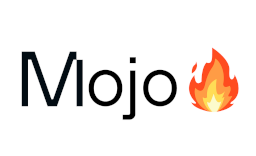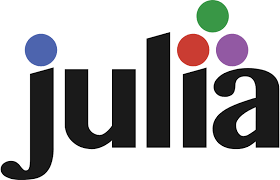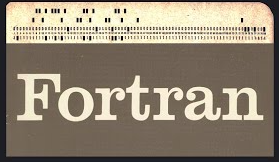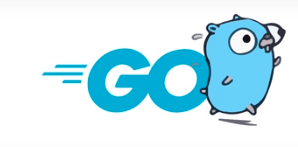The year 2025 is well under way, and software is still being created by humans. This is no surprise, and will continue in the future. So, it’s time to review which languages are worth learning this year.
This list of languages is being taken mainly from TIOBE but I wanted to suggest languages that aren’t a mainstream language. The goal of this is to give you a new language to learn and open your mind to different ways of doing things.
I’m considering here emerging languages in contrast to languages that increased their presence in social networks or their popularity in places like the TIOBE Index. Let’s start!
Gleam
I wrote a year ago about Gleam. This language is still increasing in popularity, reaching version 1.8.0 in February 2025.
Why should you take a look at this language in 2025? Because Gleam is a typed language following in the footsteps of the ML language OCaml.
Solving trivial activities with this language requires you to think differently and find better ways forward.

I recommend you visit their website and press that Try Gleam button.
Zig
Zig increased its position in TIOBE from #149 to #61 and marked as a competitor to Rust. It means we have another option besides Rust if we want to choose a low level language other than C or C++.
The Zig language puts focus on being simple, robust, optimal, and reusable.
It’s curious when we talked about Carbon as a replacement for C++, they assumed there were no other interoperable languages in the same ecosystem as C or C++. But, here’s Zig and maybe it’s what Google was searching for and didn’t realize.

I recommend you check it out if you’re tired of writing code in C or C++ and want to try something which fits to your ecosystem: no friction and easy to learn.
Mojo
Like Zig in the C or C++ ecosystem, Mojo is a boost for people who write code in Python and want to take advantage of the CPU and GPU in an optimal way.
The Mojo language also made a big jump in its TIOBE position from #194 to #68 last year!

Mojo is an easy way if you need to develop something in a Pythonic way but you want to get 100% your computer’s power. Recommended if you are a data analyst and you need a boost to your code without changing from a Python flavour.
Julia
Continuing with the data analysts, we can’t proceed without mentioning Julia which was in the top 20 in 2023.
Julia didn’t have a great 2024 statistically, but it’s still the one with a Matlab flare that handles what a data analyst needs in an optimal way.
Power computing is led by languages like Fortran, C, C++ or even Rust these days, but don’t forget about languages for people who know their problem domain but don’t have experience with low-level languages.

I recommend you check it out to get an idea about how good it is at solving some algorithm issues using a very optimized language.
Fortran
Ok, maybe now you start to worry about my mental health. First, I proposed Julia and now Fortran?! But this time, Fortran deserves to be here because it’s one of the oldest languages (1950s) in use and still evolving.
Fortran reached the top 10 in January 2025 from #12 and it’s not a surprise. Like Julia, Fortran is a favored language for optimizing code to be more performant and many users praise the close correlation between the code and its mathematical representation.

Fortran is a clear example of a language that does what it promises and there sure aren’t any more mature languages around. It’s worth checking out!
Pascal
Another classic language that is still between us. No surprise for the developers who still create desktop applications and want to avoid solutions like Electron.
Pascal was very famous during the 1970s and ’80s in DOS systems and, when Windows appeared, Borland showed us how to do RAD (Rapid Application Development) using Delphi.

These days you’ll find Delphi at #11 in TIOBE up from position #13 in 2024. Although Delphi is a proprietary platform, you can still use Lazarus which gives us a byte-compatible platform for developing cross-platform desktop applications in an optimal way.
I recommend you check out Pascal and the Lazarus platform if you want something great to create desktop applications.
Rust
Rust is a very well-known language. Maybe you’ve already played with it or it’s in your “todo” list? Time flies and Rust increased its popularity last year from #19 to #14 in TIOBE so no time like the present!
But we talked about Zig and maybe you’re thinking “that looks better and easier to learn”. You’re right, but just because something is a bit more difficult to learn doesn’t mean it’s not worth it.
Rust is a language that gains traction and fame because of its security. It forces a change of mindset when using it for development. When it feels cumbersome, you’re forced to find another, usually better solution, so why not?

Remember that Rustaceans aren’t going to stop rewriting everything in Rust. And although some leave the ecosystem, more are joining and it’s impossible to be indifferent. Check it out and decide if you love it or hate it.
Go
Google is making a lot of changes in their teams. There are projects at risk like Flutter, Dart, and Android, but Go is still a language with good maintenance. We should consider it mature and TIOBE reflects this as it’s position again increased from #11 during 2024 to #7 in January of 2025. It means Go is in the top 10 languages for TIOBE.
While most developers prefer Rust, C, C++, Zig, or another low-level language that lets them use the memory and the details of the system, Go has a GC (Garbage Collector) and is very approachable for newcomers.

Loved by a lot of development teams for it’s ease and speed of development, I highly recommend you try it out if you haven’t yet.
Conclusions
Well, we’ve reached the end of my list. I hope this helps prioritize your to-do list with some interesting languages. Remember that different problems require different tools (and languages!), which ultimately improve your solutions! The TIOBE index isn’t the law; it’s just another language popularity poll à la StackOverflow Annual Survey or the Octoverse from Github.
I wasn’t including the mainstream languages as I said at the beginning but that doesn’t mean I don’t recommend to study and learn them. If you prefer to start using C, C++, Java, Python, Ruby or another mainstream language that may also be the right option.
The most important is to keep learning and improving your mindset.
Want to discuss this article? Join our Discord.
